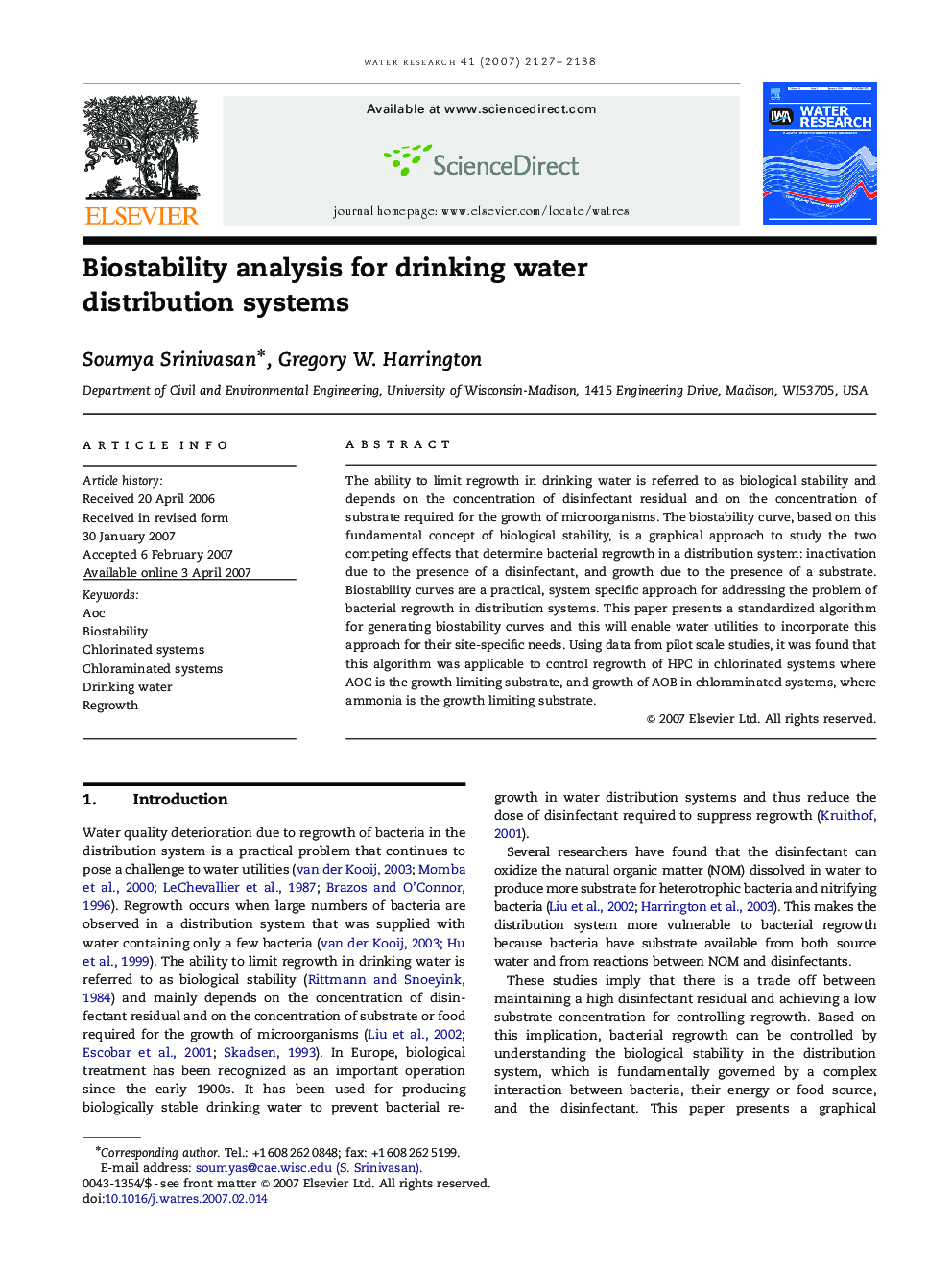| Article ID | Journal | Published Year | Pages | File Type |
|---|---|---|---|---|
| 4486287 | Water Research | 2007 | 12 Pages |
The ability to limit regrowth in drinking water is referred to as biological stability and depends on the concentration of disinfectant residual and on the concentration of substrate required for the growth of microorganisms. The biostability curve, based on this fundamental concept of biological stability, is a graphical approach to study the two competing effects that determine bacterial regrowth in a distribution system: inactivation due to the presence of a disinfectant, and growth due to the presence of a substrate. Biostability curves are a practical, system specific approach for addressing the problem of bacterial regrowth in distribution systems. This paper presents a standardized algorithm for generating biostability curves and this will enable water utilities to incorporate this approach for their site-specific needs. Using data from pilot scale studies, it was found that this algorithm was applicable to control regrowth of HPC in chlorinated systems where AOC is the growth limiting substrate, and growth of AOB in chloraminated systems, where ammonia is the growth limiting substrate.
